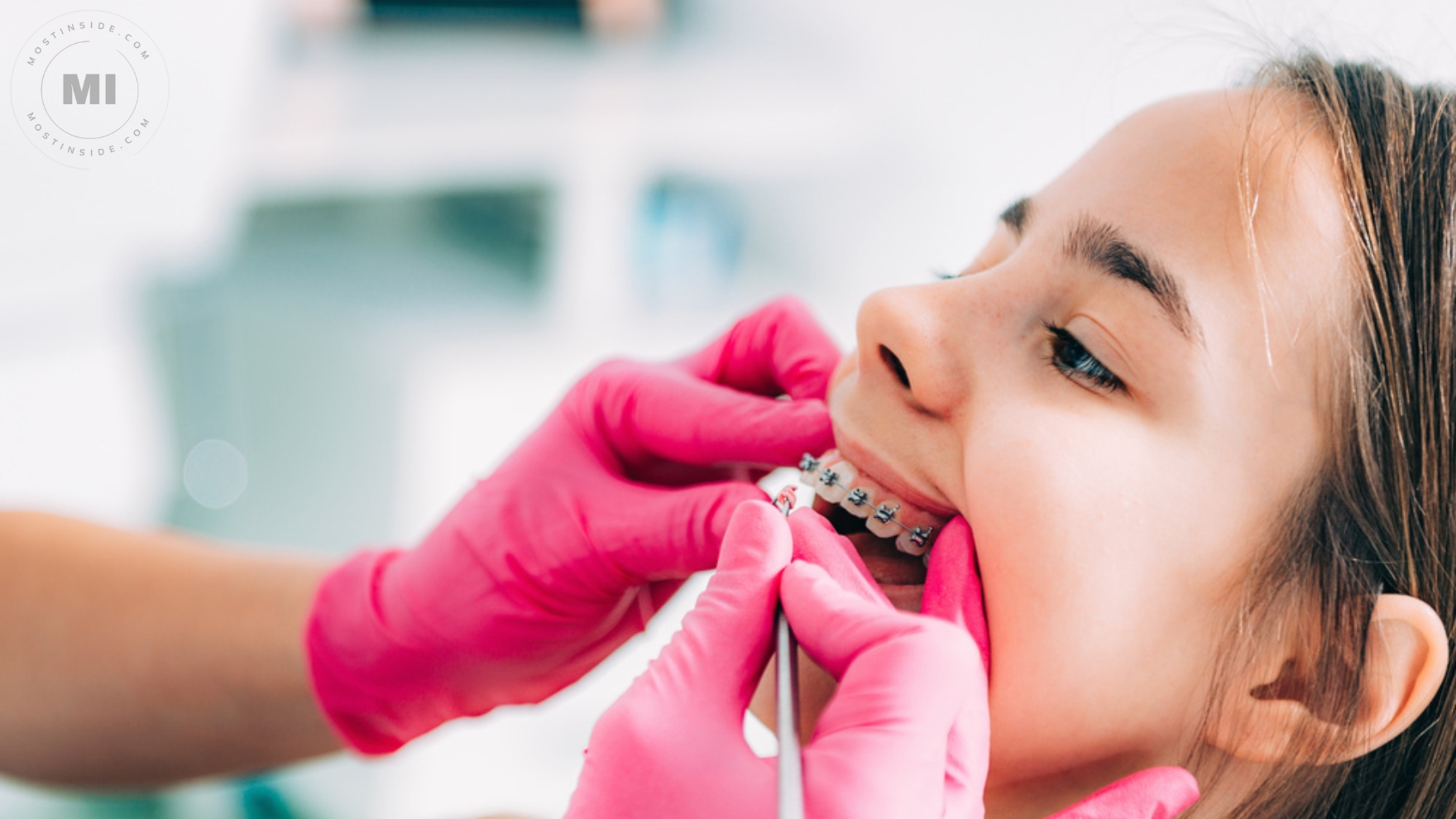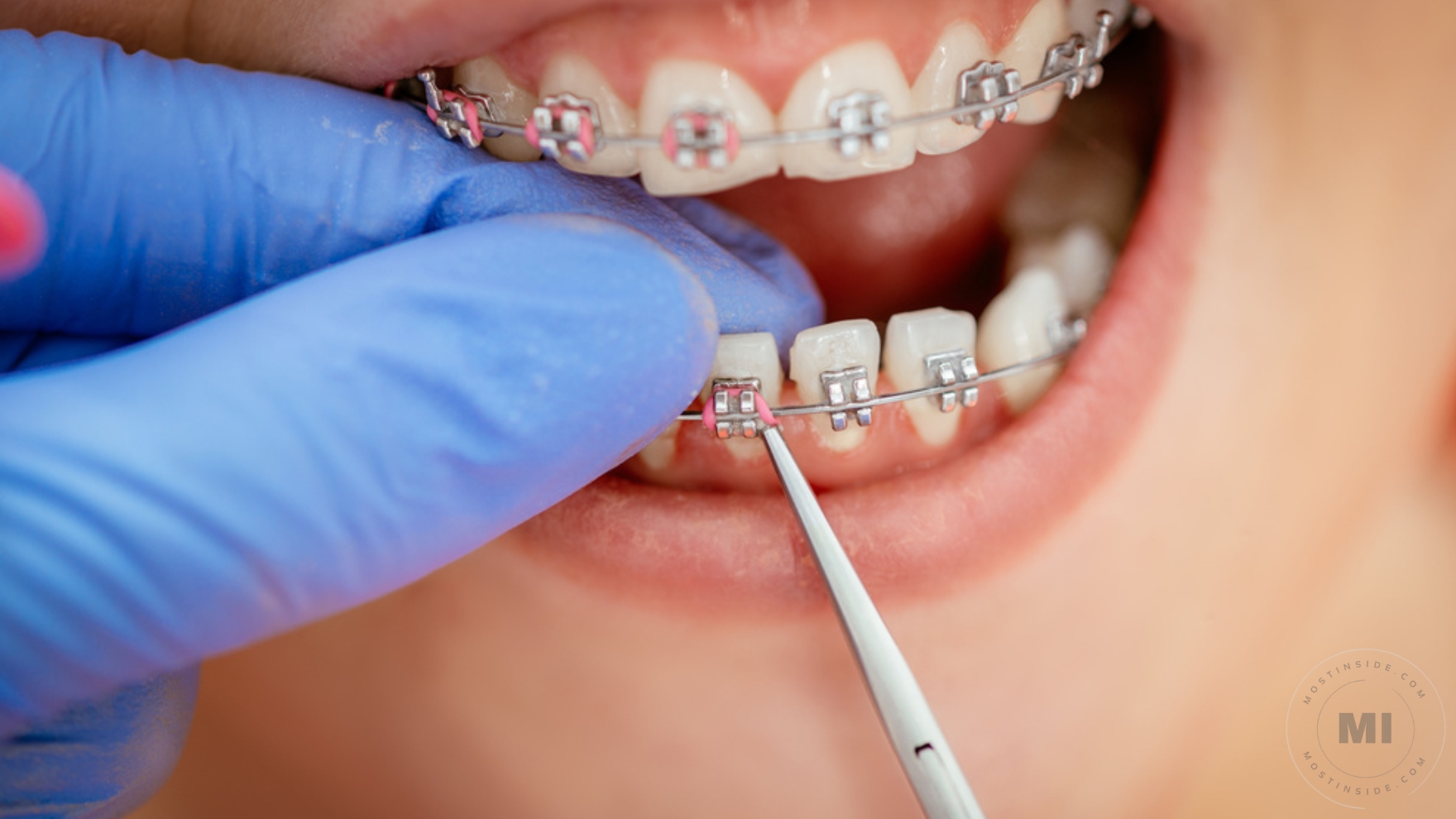A Step-By-Step Guide To Getting Your Dental Braces

If you’re a teenager, getting your braces is something you’ve thought about for years. It’s been your dream to finally have straight teeth and a smile that makes people stop in their tracks.
But the truth is, there are more steps involved in getting braces than simply showing up at the orthodontist’s office and having them put on. You have to follow specific instructions and rules to ensure that your teeth stay healthy while they’re being straightened out.
This step-by-step guide will help you get through this process as smoothly as possible.
1. Find An Orthodontist
You’ll have to find a good orthodontist who can do the job right. Many people will say that they’re an orthodontist, but you have to verify if they’re licensed and insured before you let them start working on your teeth.
When looking for an orthodontist, you want to see to it that they have a lot of training and education to do this work. You also want to make sure they can talk with you about what it’ll take for them to get the results you want and need out of your braces.
Once you’ve found someone qualified for this kind of work, it’s time to find out how much it will cost and how long it’ll take before your teeth are ready for their new smile. You can learn more about a professional by visiting https://supersmilesortho.com/.
2. Get A Consultation
Once you’ve selected an orthodontist for your braces, it’s time to book a consult. The consultation is the first step in getting your teeth straightened. During the consultation, an orthodontist will look at your teeth and gums, ask questions about how you want your teeth to look after treatment, and then talk about what treatment options are available.
The purpose of a consultation is for you to understand the process better, find out how much braces cost, and make sure that you’re comfortable with your choice of an orthodontist.
3. Undergo An X-Ray And Other Tests
It’s recommended that you undergo a thorough examination before having braces. This includes an X-ray, which will help detect potential problems with your teeth, jaws, and other vital structures in your head and neck.
The dentist will also look closely at your bite, which is how you put your top and bottom teeth together when eating or speaking. This helps determine if you have any crowding or spacing issues between your teeth that could be corrected by wearing braces.
In some cases, it may be necessary to get a panoramic x-ray of the entire jawline from ear to ear, as well as an intraoral x-ray, also known as an OPG, to get details about your tooth roots and jawbone structure. A CT scan can also be used to get even more information about the condition of your jawbone.

4. Select Your Braces
If you’re considering braces, there are a few things you need to know. There are two main types of braces: traditional metal braces and clear aligners. Both can straighten your teeth, but they work in different ways.
- Traditional Metal Braces: Metal braces consist of brackets holding small wires on your teeth’s biting surfaces. The wires are attached to rubber bands on the back side of your teeth. The combination of brackets and ligatures is called an archwire. Its goal is to gradually move the teeth into proper positions without needing much adjustment.
- Clear Aligners: Clear aligners are made of a plastic material that fits snugly over your teeth—similar to a mouthguard or athletic mouth protector. The aligner gradually moves them into their correct positions as you become accustomed to wearing them. Some clear aligners are also used to treat crowding, spacing, and rotations.
Getting a consultation from your trusted orthodontist is vital to know which of the two options is better for your case.
5. Be Careful With What You Eat
Once you get your braces, be careful with what you eat. Braces can cause serious problems if the wires are not aligned properly. Follow the instructions of your dentist to avoid misalignment of the teeth and even a wire breakage. You should avoid the following foods:
- Hard Foods: Nuts, corn on the cob, and carrots may cause injury to your braces or gums. Avoid chewing hard foods until your braces are removed.
- Sticky Foods: Sticky foods such as caramel candies can get stuck between your teeth and gum line causing irritation or damage to them. To avoid this problem, avoid sticky candies until after your braces are removed.
- Crunchy Foods: Crunchy foods such as chips may cause injury to your gums while eating them because they are hard to bite into and chew properly. Avoid crunchy foods until after your dentist or orthodontist has removed your braces.
Once you get your braces, be careful with what you eat. It’s not just about avoiding sticky or hard foods; it’s also about what you put into your mouth during the day.
6. Brush Regularly
You may need to brush your teeth several times daily to keep them clean. That can be done with a soft toothbrush and fluoride toothpaste.
Brushing your teeth is the most important thing you can do for oral health. Even if you floss regularly, brushing is still essential because it removes plaque from places that are difficult or impossible to reach with flossing alone.
Brush your teeth at least twice daily, after meals, and before bed. Brush gently, and don’t press too hard or use an abrasive toothbrush, which can damage tooth enamel.
7. Visit Your Orthodontist Regularly
If you have braces, it’s vital to visit your orthodontist regularly so they can monitor your treatment progress and make any necessary adjustments.
The frequency of visits depends on how quickly you’re moving through your plan. On average, most people come in every six weeks for an adjustment. Some patients may need more frequent visits, while others only need to come in once every few months.
Final Thoughts
It’s easy to get your teeth straightened with orthodontic braces. Follow these steps, and you’ll be on your way to a bright new smile.
Recommended For You
What Is An Orthopedic Surgeon?
Most Inside
Most Inside offers high-quality recommendations and valuable updates to enhance all aspects of your life, providing premium guidance and enriching experiences.



